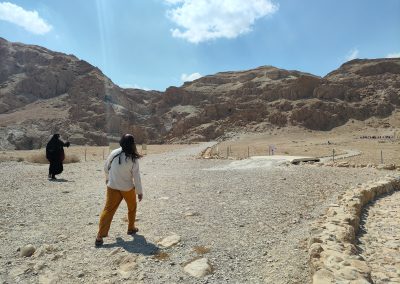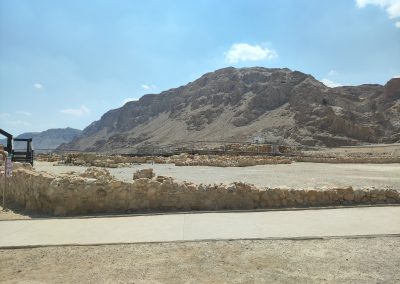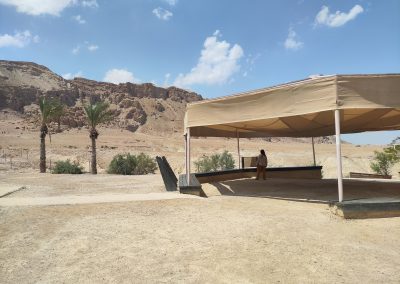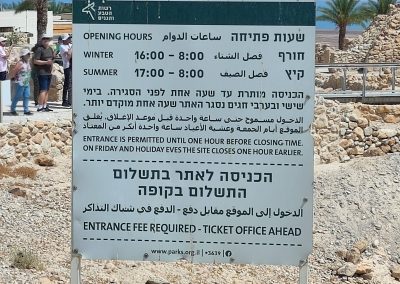
Qumran is best known as the place where the Dead Sea Scrolls were discovered not so long ago. Located on the northwestern shore of the Dead Sea in the Judean Desert approximately, Qumran is located between Jerusalem and the major Dead Sea beaches and attractions such as Ein Gedi and Masada. Missed by many tourists, Qumran tells an interesting historic story, and offers some amazing opportunities for adventure sports.
Remains dating back to the Iron Age have been uncovered at Qumran as well as walls, pottery and a cistern from later settlements. Even all those years ago fresh water was an issue in this dry environment, and aqueduct systems were added to bring fresh water to the city from the greener regions of the north.
Qumran was established during the Hellenistic Period c.134-104BC and remained inhabited up until c.68BC, multi-level structures, reservoirs, pottery kilns and houses have been excavated in this era. It was during the Hellenistic Period that the Essenes Jewish sect settled here, isolating themselves from big city life and living as a communal monastery-like community. The sect is thought to have eaten communal meals, studied sacred scriptures for most of the night, taken a daily ritual bath, practice celibacy and they had their own calendar. From information found in the Dead Sea Scrolls scholars have managed to get a clear picture of the community’s way of life and beliefs. It is thought that about 200 people once lived here. In later periods of history there were Arab settlements here and during the Bar Kokhba Revolution the rebels may have taken refuge here.
In 1947 local Bedouins discovered a clay jar containing 7 scrolls in a cave about 1.5km from Qumran. The ancient scrolls were sold to antique dealers and after changing hands several times they reached scholars who could accurately evaluate the age and value of the parchments. Further exploration uncovered a total of 972 texts including the oldest known existing copy of the Old Testament. The texts are written in Hebrew, Aramaic, Greek and Nabataen. The scrolls are believed to have belonged to the Essenes sect. Some of the scrolls describe the tenants of the sect and their particular slant on Judaism. In all there were 12 caves where scrolls and fragments of parchment were found.
The scrolls are now housed in the Shrine of the Book at the Israel Museum in Jerusalem where they are kept at the optimal temperature and humidity conditions to preserve them for the future. The Copper Scroll found in Cave #3 is on display in the Amman Museum in Jordan.
QumranThe Qumran Visitors Center where you can see an audio presentation about the scrolls and the settlement. When visiting you can see the aqueducts, cisterns, reservoirs, tower, scriptorium, kitchen, assembly hall, pantry, pottery workshop, kiln and cattle pen.
Qumran and the surrounding landscape is a popular location for canyoning, speolo, and rappelling.
A visit to Qumran takes one to two hous and although it is possible to visit throughout the year the heat in summer can be unbearable.
The park is open from April to September from 8am to 5pm and from October to March until 4pm.
Entrance Fees: Entrance costs 29NIS for adults.









